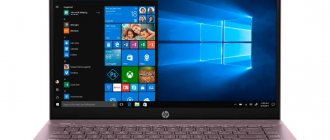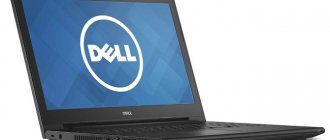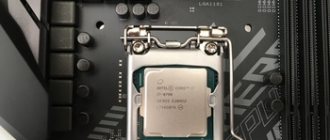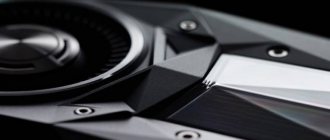What does a lightweight laptop mean?
Which laptop is considered light? In the West they will answer that it should weigh less than three pounds, that is, no more than 1.35 kg. If it has a 15.6-inch screen, the weight can reach 1.8 kg. True, a similar model Acer Swift 5 weighs less than 1 kg. This weight does not include an adapter for connecting to an outlet, which you cannot do without.
For manufacturers, creating a portable laptop is a compromise. A small battery saves weight, but the laptop won't last long. This is bad for a device that is expected to work all day while watching videos. Exotic chassis materials like carbon fiber and magnesium alloy weigh less than laptops made from plastic and aluminum, but they are more expensive. A touchscreen wouldn't hurt, but the glass layer adds weight.
So, choosing a lightweight laptop is all about determining what you need most. Sometimes the choice is not obvious. For example, the ability to update the device. On the lightest laptops, the RAM may be soldered to the motherboard instead of being inserted into SO-DIMM sockets as on heavier models. Almost all lightweight laptops use solid-state drives, which are more expensive than hard drives. These too can be soldered to the board or can be connected to SATA and PCI Express M.2 SSD modules if you can open the case.
The most important thing is the choice of display.
The best budget laptops with thin bezels
First of all, we will analyze the most inexpensive options proposed by our expert group. Thin screen frames involuntarily evoke associations with premium class and its high cost. In fact, such models may not be expensive at all, and there is not even a real shortage of them.
Acer Aspire 3 A315-34
Rating: 4.7
The review will open with the line of Acer Aspire 3 laptops, namely the A315-34 series. This is the most affordable series, including many modifications with the ability to select even such key components of a laptop as a processor or matrix. The screen frames will remain the same. We will look at one of the most budget-friendly configurations, indicating the characteristics that can be improved at the selection stage.
Case dimensions - 19.9x363.4x250.5 mm, laptop weight - 1.94 kg. The case is plastic, the color is only black. Screen diagonal – 15.6″. Matrix - TN, resolution - HD 1366x768 (you can choose another option, more on that below). The surface is matte. The frames are thin only on the sides, but this already has a positive effect on visual perception.
The electronics here are based on a budget Pentium N5000 series processor with four Gemini Lake cores at a frequency of 1.1 GHz. RAM – 4 GB DDR4 with expansion potential up to 8 GB. The video card is the most basic - integrated into the processor.
From communications we see here two USB2.0 ports on Type A connectors; one USB3.1 Type A port; HDMI multimedia interface; combined 3.5 mm audio output for headset; RJ-45 connector from a gigabit network card; familiar wireless modules Wi-Fi 802.11ac and Bluetooth version 4.1. The standard 2-cell lithium-ion battery with a capacity of 4810 mAh provides up to 6.5 hours of independence from an outlet.
And now a few words about those characteristics that may vary depending on the specific modification. This resolution and matrix type are HD 1366×768 or FullHD 1920×1080; processor - Celeron or Pentium; RAM capacity - 4 or 8 GB; type and capacity of the hard drive - mechanical HDD, solid-state SSD or a combination of both. HDD capacity - up to 1 TB, SSD - up to 256 GB. Depending on the final configuration, the weight of the laptop will change - up to 2.1 kg, and dimensions - from 19 to 21 mm in thickness and within 1-2 cm in width and depth. And here you need to understand that the maximum configuration automatically means the laptop moves into the middle price category.
In general, feedback from users of laptops in this series is mostly positive. There are some criticisms of the most inexpensive modifications in terms of performance, but they mostly come from unreasonably high expectations. The objective disadvantage of the series is the low upgrade potential - the characteristics can be improved, but not radically.
Advantages
- good assembly;
- reliability and stability;
- many modifications in the series;
- affordable price.
Flaws
- low upgrade potential.
Lenovo IdeaPad L3
Rating: 4.6
The second interesting option for an inexpensive laptop with thin screen bezels is the Lenovo IdeaPad L3. This is also a whole series, and even more voluminous in terms of modifications than the previous one, allowing you to flexibly select the desired configuration on an individual basis. As an example, we will look at one of the most inexpensive, but still not the cheapest.
The dimensions of the laptop case are 363x254.6x22.9 mm, weight is up to 2.2 kg, depending on the configuration of hard drives. The diagonal screen size is 15 inches. The matrix can be of different resolutions - 1366x768 or 1920x1080. Here you can confidently choose a more advanced matrix with a FullHD 1920x1080 resolution, since the “lower” one will only slightly affect the overall cost, but there will be inevitable losses in image quality and detail. The matrix technology, however, will be TN, since IPS is already significantly more expensive.
There are many options for choosing a processor base within this series, ranging from the simplest dual-core Celerons to Core i7. To invest on a limited budget, you should choose the maximum Core i3. The video card is built into the processor; if desired, you can choose a discrete one, increasing the overall cost of the laptop.
The minimum configuration of RAM is 4 GB with expansion potential up to 12 GB. Memory type - DDR4, clock speed - from 2400 MHz to 2666 MHz, depending on compatibility with the selected processor type. It is worth noting here that there is only one RAM slot in this series. This is not very convenient, but at least the memory is not soldered to the motherboard, and an upgrade is at least possible in principle.
There are also plenty of options for choosing a hard drive here - from an inexpensive 500 GB mechanical HDD to a tandem of a terabyte HDD and a 256 GB solid-state SSD.
Communications and interfaces in this series are quite typical: HDMI output; RJ-45 connector from a gigabit network card; two USB 3.1 ports on type A sockets; one USB 3.1 port on a Type C socket; Combo 3.5mm output for headset. Wireless modules - Wi-Fi 802.11ac and Bluetooth, and the new generation 5.0.
Depending on the configuration, the battery in the laptop can be lithium-ion or lithium-polymer with a capacity of 36 Wh. This energy potential, according to the manufacturer, should be enough for 9 - 10 hours of operation. This is the maximum operating time “at minimum settings” - in energy-saving mode with not the most resource-intensive applications.
Advantages
- good assembly;
- pleasant appearance;
- comfortable island keyboard;
- price-performance ratio;
- Bluetooth 5.0;
- wide upgrade possibilities.
Flaws
- one slot for RAM.
Lenovo IdeaPad S145-15IWL
Rating: 4.5
The third number in the selection is another laptop with thin frames from Lenovo. It is in many ways similar to the previous one, but the fundamental difference is fundamental - the electronics can be based on processors not only from Intel, but also from AMD in a wide range of choices.
Dimensions of modification 15IWL - 362x252x19.9 mm, weight - 1.85 kg. The case is plastic, the plastic itself is not particularly remarkable, but the assembly is solid and thorough. There are only two exterior design options - matte black and textured black. Screen size: 15 inches. The matrix resolution can be FullHD 1920×1080 or lower, depending on the specific configuration. Technology - only budget TN.
When choosing a cheaper option, the easiest way is to focus on the processor. The most affordable are the Athlon family from AMD or the Celeron family from Intel. The RAM configuration can vary from 4 to 12 GB. For some modifications, the upper limit of RAM may be only 8 GB; this must be clarified at the point of sale. In any case, there is only one memory slot, and this is limiting. Wireless modules are standard - WiFi and Bluetooth 4.2.
Separately, it is worth emphasizing the well-designed and technically implemented keyboard. It is full-size here, with a digital pad. The keys are island-type, with a distinct but easy stroke.
Autonomous operation of the laptop is ensured by a battery with a capacity of 30 Wh (4000 mAh). More energy-intensive modifications can be equipped with more powerful batteries. Operating time on a full charge varies from 4 to 6 hours. The maximum duration is only possible in energy-saving mode with moderate load.
The interfaces are mainly concentrated on the left side of the laptop body, in the same place as the power socket. Here we see an HDMI video interface, three USB ports - two 3.1 Gen.1 and one 2.0, all three on classic type A sockets. On the right side there is a card reader for full-size SD cards and a combo 3.5 mm minijack for a headset. The motherboard has an M.2 interface for connecting SSDs or other compatible devices.
There are minimal complaints from real users about this series of laptops. They often concern the performance of the most budget modifications and unsuccessful attempts to install device drivers for Windows versions below 10.
Advantages
- good build;
- reliability and stable operation;
- many configuration options;
- comfortable island keyboard;
- nice stylish appearance.
Flaws
- difficulties with drivers, especially under Windows older than version 10;
- only one RAM slot.
Asus Laptop 15 X509
Rating: 4.4
The selection of the best inexpensive laptops with thin frames, according to Expertology magazine, will be completed by the Asus X509 series. Here, too, the buyer is offered many modification options, some of which are very affordable. The series is very similar in some aspects and appearance to the VivoBook family, and some sellers are positioning it that way, which is incorrect. VivoBook is a higher-end series, and we will look at it with two examples in the next collection.
The dimensions of the laptop in the most popular version are 360 x 235 x 22.9 mm, and may vary depending on the modification. Weight - from 1.8 to 1.9 kg, ultimately depends mainly on the choice of hard drive. The case is plastic, the design is light, pleasant, stylish. Screen size is 15.6 inches diagonally. The keyboard is full-size with a number pad.
The most budget laptop modifications are based on Core i3 processors from Intel or Ryzen 3 from AMD. The minimum RAM is 4 GB, the maximum in standard versions is 8 GB. The upper threshold for a potential upgrade also depends on the specific modification and can be 16 or even 20 GB. The type of memory can also be different - DDR4/LPDDR4 with a frequency of 2133/2400 MHz.
Some variations in terms of the balance between affordable price and characteristics are acceptable in terms of matrix configuration. Here you can choose not only between a resolution of 1366x768 and 1920x1080, but also between the type - TN or IPS. If it is the IPS matrix that is critically important, but at the same time you also need to maintain a minimum price, then you should stop at the improved version of the matrix, and try to select the remaining components to the minimum.
Most of the laptop's interfaces are located on its left side, in the same place where the ventilation grille for removing heated air and the round power socket are located. Here we see HDMI 1.4, USB-C 3.1 Gen 1 ports on Type A sockets. In addition, there are two more USB 2.0 Type A ports, a 3.5 mm audio jack for a headset. Wireless communication - standard Wi-Fi and Bluetooth modules. Versions of the latter may vary, but only within the 4th generation.
In terms of battery life, this model is comparable to the previous one. The battery is very similar and the parameters are most common for such inexpensive laptops: capacity - 4050 mAh or 32 Wh, two cells, lithium-ion or lithium-polymer technology. A full charge lasts for 5 hours with light load.
Advantages
- high-quality assembly;
- many modification options;
- comfortable keyboard and touchpad;
- high threshold for the maximum amount of RAM;
- good location of ventilation holes;
- stylish appearance.
Flaws
- slow HDMI;
- one slot for RAM.
Screen Size: Weight vs. Picture Quality
Obviously, the main contribution to the weight of a laptop is its body. This determines the screen size. If an 11.6-inch diagonal is enough for you, the choice of lightweight laptops is quite rich. If you need a large 17-inch screen, you can only remember the LG Gram 17Z990, which is not discussed in this review. It's a $1,699 laptop with an Intel Core i7 processor, weighing almost 1.35 kg, and a carbon and magnesium body. The flagship model offers 16 GB of RAM, a 512 GB solid-state drive and a screen resolution of 2560 x 1600.
Most lightweight laptops are smaller than this, although it is up to the buyer to decide what constitutes small. At 1.23kg, the MacBook Air isn't Apple's lightest laptop. That honor goes to the 900g Macbook. On the other hand, one has a 13.3-inch screen while the other has a 12-inch screen. The Macbook was discontinued in July 2021, but it can probably still be found on sale.
The thinner the frames, the better
Excess weight is the enemy of a thin laptop. Look for a model with the highest screen-to-body ratio possible. The smaller the frame around the screen, the better. Frames around the keyboard are also undesirable.
Dell XPS 13 was one of the first series of laptops with edge-to-edge screens. The developers describe them as 13-inch laptops in an 11-inch body. The downside is that there is no space for a webcam above the screen. Therefore, it is located under the screen. As a result, your interlocutors may see you from an odd angle from bottom to top.
Thanks to the miniature lens, the 2021 Dell XPS 13 model was still able to get a camera in the top frame. And yet, before purchasing, you need to check exactly where it is located. The 1.32kg Huawei MateBook X Pro and Acer Swift 7 offer a webcam on top of the keyboard, showing your neck instead of your face.
Laptops with detachable keyboards
There are categories of laptops that can also be considered tablets. Their keyboard can be attached and detached. If you want to work closely, type text, edit something, you connect a keyboard. If you just want to read or watch a video, you can remove the keyboard and sit comfortably on the sofa or chair. Naturally, without a keyboard, the device weighs even less than a traditional laptop.
For example, this is the Microsoft Surface Pro 6 with a 12.3-inch screen. Without the keyboard, the weight of the tablet is 765 g, with the keyboard 1.071 kg. Microsoft sells the Signature Type Cover keyboard separately, unlike many other manufacturers that include it in the package. The 13-inch Lenovo ThinkPad X1 Tablet weighs 882 g without the keyboard, and 1.255 kg with the keyboard.
It's not just hybrid laptops that have removable keyboards. There are also models with the ability to rotate the screen into tablet mode, as a result of which the device turns into a tent-like one. These include the HP Specter x360 13, weighing 1,305 kg. These flexible hinges add weight compared to classic laptops. For example, the classic HP Specter 13 laptop weighs 1.1 kg. Samsung Notebook 9 Pen weighs 990 g.
The Best Mid-Range Laptops with Thin Bezels
In the second part of our review, we will look at a series of laptops that are higher end than the previous ones. Within these series, many modifications are also available, but in terms of the totality of their characteristics, they show noticeably higher performance and are more expensive.
ASUS VivoBook 15 X512
Rating: 4.9
First, let's look at a real representative of the VivoBook line from ASUS, which we mentioned in the description of the previous model. Even within this more prestigious series, you can easily choose a budget configuration. However, the class of the device already guides you towards the choice of more interesting components.
In this series, a higher class is visible already at the first glance. The quality of materials and workmanship is noticeably high, and the designers pay close attention to small details. Even in small things, the developers tried to maintain an optimal balance between performance, convenience and style with a minimal increase in production costs.
So, for example, although the lid cannot be lifted with one hand, like on MacBooks, the rest of the ergonomics are at the same level: keys with a pleasant and distinct stroke, the “ergo-lift” design of the open lid position, expensive plastic housing with a matte texture and interspersed microscopic “sparkles” that give the material the appearance of some kind of mineral. And here we finally see the keyboard backlight, and a three-level one. The keyboard itself, although compact, without zoning, is full-size and contains a number pad.
The laptop is equipped with an IPS matrix with a resolution of 1920×1080. Screen size is 15.6 inches diagonally. The surface is matte. Mostly, an integrated video card is enough for buyers, but those who need a discrete one can easily find the appropriate modification.
The interfaces in this series present a mixed picture. So, here we see USB 3.2 Gen1 Type-C and two classic USB 2.0 ports on Type A sockets, plus a standard audio jack and HDMI video output. As you can see, there is no network port, just like there is no built-in network card. Some manufacturers offer similar models, without emphasizing in any way that the lack of a network card is any problem. In this case, the manufacturer even went to the trouble of equipping the laptop with an adapter from an RJ-45 network port to a high-speed USB 3.2 Gen1 Type-C. And everything would be fine, only there is only such a port, and having used it for a wired network, the user is left with two slow USB 2.0.
The batteries in the VivoBook 15 X512 series laptops are quite ordinary, with a capacity of up to 4050 mAh (37 Wh), for two cells. On a full charge, the laptop can work up to 5 hours. The weight of the laptop, depending on the configuration, varies from 1.6 to 1.95 kg.
Advantages
- quality of materials and workmanship;
- meticulous attention to detail;
- selection of discrete video cards in different modifications;
- three-level keyboard backlight;
- IPS matrix;
- ergonomics.
Flaws
- no built-in network card;
- only one USB 3.2 Gen1 Type-C.
Acer Swift 1 SF114-32-P43A (NX.GZGEU.008) Green
Rating: 4.8
Now we invite you to pay attention to another laptop with thin frames of the Acer Swift 1 series. We will be talking about a specific modification based on an Intel Core i5 processor, which our experts have identified to demonstrate the capabilities. If desired, components can be adjusted at the selection stage at the point of sale.
The dimensions of the laptop of this model are quite ordinary - 319.5x217x15.95 mm, but the weight is unexpectedly pleasing - only 1.19 kg. It's all about the smaller screen diagonal - 14 inches, compared to more than 15, like the models described above. The smaller diagonal did not affect the resolution in any way - here it is 1920x1080 with a good IPS matrix with maximum viewing angles.
The electronics here are noticeably more powerful than any of the budget models described above. The basis is a 4-core Intel Core i5 processor with Ice Lake-U cores. The RAM used here is of the mobile type - LPDDR4 in the amount of 8 GB. Hard drive - solid-state SSD with a capacity of 256 GB.
The set of interfaces in this case is partly dictated by the form factor of the laptop. The manufacturer and trading platforms are positioning the model as ultraportable, which means you can’t expect a wide range of interfaces from it. So, initially there is no wired network card, and you can only access the Internet via Wi-Fi (if you don’t consider options through an adapter to a USB port). But wireless communication is presented here in the best way: a Wi-Fi module of the new 802.11ax standard and high-speed Bluetooth 5.0.
I'm definitely pleased with the laptop's battery life capabilities. The battery in it is quite “banal” - with a capacity of 4200 mAh. But thanks to lower power consumption and overall good optimization, a full charge can last up to 10 hours in moderate mode.
In conclusion, let us note that as of the summer of 2020, this series is not found everywhere on Russian trading platforms, and you may have to look for the required configuration.
Advantages
- build quality;
- IPS matrix;
- large viewing angles;
- high-quality “picture” with rich colors;
- performance;
- Bluetooth 5.0;
- New generation Wi-Fi;
- autonomy;
- combination of price and characteristics.
Flaws
- no network card;
- "mobile" RAM.
Asus M509DA-EJ034 Silver
Rating: 4.7
And again in our review is Asus, this time the M509 series of laptops. This series is also quite voluminous, including very affordable options. But modifications with above-average performance look much more organic here. We will analyze one of the most popular - M509DA-EJ034.
Case dimensions - 360.2x234.9x22.9 mm, laptop weight - 1.8 kg. The design is classic; externally, the laptop does not stand out in any way. Screen diagonal - 15.6. Modification options allow you to save on the matrix by choosing a budget TN, but it is in this option that our experts still recommend IPS with its viewing angles of almost 180 degrees, otherwise the image quality will be too weak a link compared to the other characteristics.
The central processor here is a bright representative of the Ryzen series from AMD, namely the Ryzen 5 3500U with four cores and a frequency of 2.1 GHz. RAM - DDR4 with a clock frequency of 2400 MHz in a volume of 8 GB. What’s also noteworthy is that this configuration includes a discrete NVIDIA GeForce MX230 video card with 2 GB of memory. Of course, this is far from serious gaming, but still there are at least some abilities in terms of three-dimensional graphics, which cannot be compared with integrated graphics cores. Hard storage: SSD with a capacity of 256 GB.
The set of interfaces on this laptop is almost the same as the previous one, but slightly worse in terms of wireless modules. There is an HDMI output, mandatory for modern laptops, two USB 2.0 ports on Type A connector, two USB 3.2 Gen1 ports on Type A and C connectors. There is no output from the network card, as well as the network card itself. Wireless Wi-Fi and Bluetooth modules are available, but not as advanced as those of the Acer Swift - 802.11ac and 4.1 standards, respectively.
As for battery life, the manufacturer has frankly saved money here. A 32 Wh battery can provide no more than 4 hours of operation in moderate mode. This is not to say that this is not enough, but with any progress towards increasing energy consumption, the battery life will rapidly decrease.
Advantages
- relatively powerful processor;
- good assembly;
- reliable and uninterrupted operation;
- performance;
- IPS matrix;
- large viewing angles;
- there is a USB 3.2 Gen1 Type C port;
- discrete video card.
Flaws
- no network card;
- battery is weak.
HP Pavilion 15-cw1014ua (8RT36EA) Blue
Rating: 4.6
Hewlett-Packard's range of portable computers also includes models with thin frames, and our experts suggested one of them for consideration. As is usual with most major manufacturers, this is also a whole series, within which different configuration options are available. We will build on one specific one, which Expertology experts considered the most successful and balanced.
Case dimensions - 361.6x245.6x17.9 mm, laptop weight - 1.85 kg. The most popular and for the most part the only available color option is light silver metallic. The screen size is 15.6 inches with an IPS matrix with FullHD resolution 1920×1080.
The central processor here is AMD Ryzen 3 3300U with four cores at 2100 MHz. RAM – from 4 GB DDR4 type with a clock frequency of 2.4 GHz. Integrated video card AMD Radeon Vega 3 or Vega 6, depending on the build - this point is rarely important. The hard drive in this configuration is the same as the previous version - a 256 GB solid-state SSD.
The switching situation for this model is very similar to the several ultrabooks described above, that is, the set of interfaces is minimal. There is an HDMI multimedia output, two USB 3.1 ports on Type A connectors, one USB 3.1 Type-C, and a combined 3.5 mm audio jack for a headset (headphones and microphone). The wireless communication modules are the most common, but quite sufficient for everyday use - Wi-Fi IEEE 802.11ac and Bluetooth 4.2.
The developers of the series definitely pleased us by equipping the laptop, although not with a record capacity, but quite a decent 41 Wh battery. A full charge lasts almost 10 hours with minimal intensive use. Let us emphasize that such operating time is actually achievable with minimal consumption - reduced brightness, airplane mode - essentially using the laptop as an e-reader.
In general, users have almost no fundamental problems with this laptop. Complaints concern things that can be solved simply by a simple upgrade and cannot be considered completely objective. The only bottleneck is that there is practically no brightness reserve on the screen.
Advantages
- materials and build quality;
- decent processor in its class;
- high-quality IPS matrix;
- USB 3.1 Type-C;
- well balanced characteristics;
- relatively capacious battery.
Flaws
- low screen brightness margin;
- no network card.
ASUS VivoBook S15 S531
Rating: 4.5
And the final bright model in the second part of the review of the best laptops with thin frames according to Expertology magazine is another VivoBook from Asus, this time the top-end S series with all its premium characteristics. The series is very large, including modifications with different screen diagonals, and we will consider the universal 15-inch version with a full, uncut keyboard.
The dimensions of the laptop are 357x230x18.5 mm, weight is 1.8 kg. All the advantages of the series - impeccable quality of materials, strong assembly, careful attention to detail, ergonomics - all this is implemented in this model at the proper level. The 15.6-inch screen is equipped with an IPS matrix with very good performance. Viewing angles are standard for this technology, that is, almost 180 degrees. Resolution - 1920x1080.
This particular model allows for processor options - Core i5 or i7 to choose from. And a specific choice will entail some other changes. So, for example, RAM can be 8 GB or more, up to 16 GB, which is the physical limit for this laptop. Memory type - DDR4, clock frequency - 2.4 GHz. The video card is standard built into the Intel UHD Graphics 620 CPU.
Against the background of the described quite good characteristics, the data storage subsystem stands out clearly. Here the manufacturer has taken care of the widest possible selection and the same maximum compatibility. Typical configurations are HDD+Optane or HDD+SSD. Mechanical disk capacity - up to 2TB, solid-state - up to 512GB, Optane - 16GB.
The interface configuration is modest, but quite sufficient - two USB 2.0 ports on type A connectors, one USB 3.1 port also on connector A, one USB 3.1 Type-C port, an HDMI multimedia output, a 3.5 mm combo interface for audio. There is no network card here, and, accordingly, no network output either. You can connect to the network via Wi-Fi, and to devices over the air via Bluetooth.
The battery here is responsible for autonomy; its characteristics are similar to the previous one: lithium-ion, made up of three cells with a total capacity of 42 Wh. Operating time from a full charge is up to 6 hours.
Advantages
- impeccable materials and assembly;
- reliability and reliability;
- high-quality IPS matrix;
- hard drive configuration;
- attractive design;
- keyboard backlight;
- there is a USB 3.1 Type-C port;
- prestigious series.
Flaws
- no network card.










